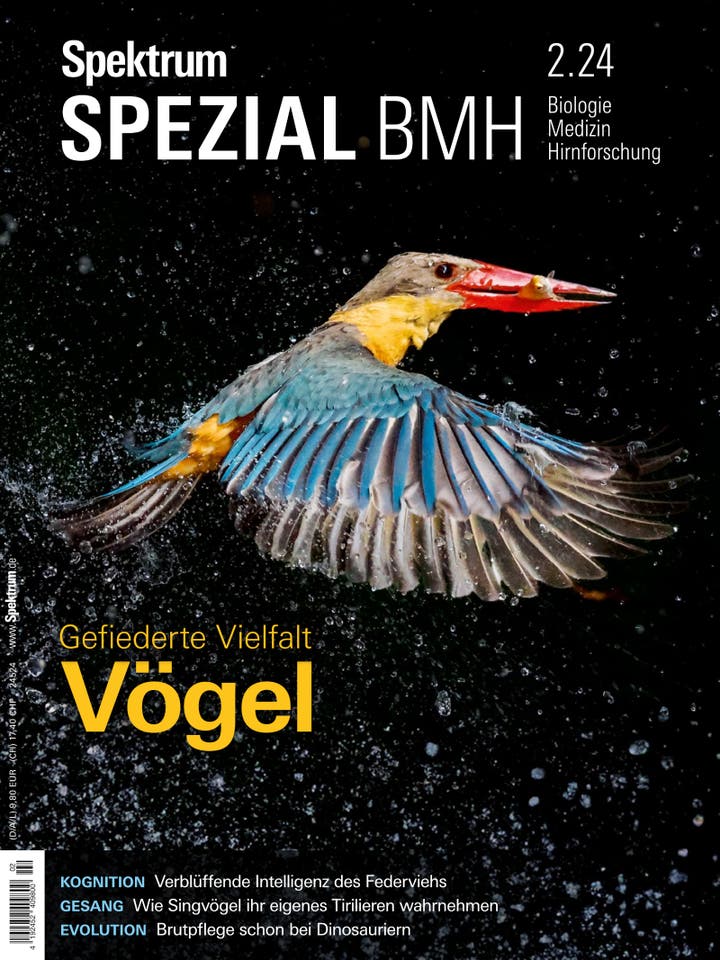Login erforderlich
Dieser Artikel ist Abonnenten mit Zugriffsrechten für diese Ausgabe frei zugänglich.
Fünf Sinne hat der Mensch. Damit wir die Welt als Ganzes wahrnehmen, müssen sie clever kooperieren – und manchmal sogar regelrecht miteinander verschmelzen.
Literaturtipps:
Calvert, G. A.: Crossmodal Processing in the Human Brain: Insights from Functional Neuroimaging Studies. In: Cerebral Cortex 11(12), 2001, S. 1110-1123.
Calvert, G. A. et al. (Hg.): The Handbook of Multisensory Processes. Cambridge: MIT Press 2004.
Kaas, J. H., Hackett, T. A.: Subdivisions of Auditory Cortex and Processing Streams in Primates. In: Proceedings of the National Academy of Sciences 97(22), 2000, S. 11793-11799.
Kayser, C. et al.: Integration of Touch and Sound in Auditory Cortex. In: Neuron 48(2), 2005, S. 373-384.
Macaluso, E., Driver, J.: Multisensory Spatial Interactions: a Window onto Functional Integration in the Human Brain. In: Trends in Neurosciences 28(5), 2005, S. 264-271.
McGurk, H., MacDonald, J.: Hearing Lips and Seeing Voices. In. Nature 264(5588), 1976, S. 746-748.
Stein, E., Meredith, M. A.: The Merging of the Senses. Cambridge: MIT Press 1993.
Calvert, G. A.: Crossmodal Processing in the Human Brain: Insights from Functional Neuroimaging Studies. In: Cerebral Cortex 11(12), 2001, S. 1110-1123.
Calvert, G. A. et al. (Hg.): The Handbook of Multisensory Processes. Cambridge: MIT Press 2004.
Kaas, J. H., Hackett, T. A.: Subdivisions of Auditory Cortex and Processing Streams in Primates. In: Proceedings of the National Academy of Sciences 97(22), 2000, S. 11793-11799.
Kayser, C. et al.: Integration of Touch and Sound in Auditory Cortex. In: Neuron 48(2), 2005, S. 373-384.
Macaluso, E., Driver, J.: Multisensory Spatial Interactions: a Window onto Functional Integration in the Human Brain. In: Trends in Neurosciences 28(5), 2005, S. 264-271.
McGurk, H., MacDonald, J.: Hearing Lips and Seeing Voices. In. Nature 264(5588), 1976, S. 746-748.
Stein, E., Meredith, M. A.: The Merging of the Senses. Cambridge: MIT Press 1993.
- Christoph Kayser (Max-Planck-Institut für biologische Kybernetik)







Schreiben Sie uns!
Beitrag schreiben